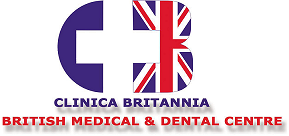Heart failure (HF), often referred to as congestive heart failure (CHF), is when the heart is unable to pump sufficiently to maintain blood flow to meet the body’s needs. Signs and symptoms commonly include shortness of breath, excessive tiredness, and leg swelling. The shortness of breath is usually worse with exercise, while lying down, and may wake the person at night. A limited ability to exercise is also a common feature. Chest pain, including angina, does not typically occur due to heart failure.
Common causes of heart failure include coronary artery disease including a previous myocardial infarction (heart attack), high blood pressure, atrial fibrillation, valvular heart disease, excess alcohol use, infection, and cardiomyopathy of an unknown cause. These cause heart failure by changing either the structure or the functioning of the heart. There are two main types of heart failure: heart failure due to left ventricular dysfunction and heart failure with normal ejection fraction depending on whether the ability of the left ventricle to contract is affected, or the heart’s ability to relax. The severity of disease is usually graded by the degree of problems with exercise.[Heart failure is not the same as myocardial infarction (in which part of the heart muscle dies) or cardiac arrest (in which blood flow stops altogether). Other diseases that may have symptoms similar to heart failure include obesity, kidney failure, liver problems, anemia, and thyroid disease.
The condition is diagnosed based on the history of the symptoms and a physical examination with confirmation by echocardiography.Blood tests, electrocardiography, and chest radiography may be useful to determine the underlying cause. Treatment depends on the severity and cause of the disease. In people with chronic stable mild heart failure, treatment commonly consists of lifestyle modifications such as stopping smoking, physical exercise, and dietary changes, as well as medications. In those with heart failure due to left ventricular dysfunction, angiotensin converting enzyme inhibitors or angiotensin receptor blockers along with beta blockers are recommended. For those with severe disease, aldosterone antagonists, or hydralazine with a nitrate may be used. Diuretics are useful for preventing fluid retention.[6] Sometimes, depending on the cause, an implanted device such as a pacemaker or an implantable cardiac defibrillator may be recommended. In some moderate or severe cases, cardiac resynchronization therapy (CRT) or cardiac contractility modulation may be of benefit. A ventricular assist device or occasionally a heart transplant may be recommended in those with severe disease that persists despite all other measures. [:es]La insuficiencia cardíaca (IC) es la incapacidad del corazón de bombear sangre en los volúmenes más adecuados para satisfacer las demandas del metabolismo; si lo logra, lo hace a expensas de una elevación anormal de la presión de llenado de los ventrículos cardíacos. La IC es un síndrome que resulta de trastornos, bien sean estructurales o funcionales, que interfieren con la función cardíaca. No debe confundirse con la pérdida de latidos, lo cual se denomina asistolia, ni con un paro cardíaco, que es cuando la función normal del corazón cesa, con el subsecuente colapso hemodinámico, que lleva a la muerte. Puesto que no todos los pacientes cursan con sobrecarga de volumen en el momento de la evaluación inicial o revaluaciones subsiguientes, se prefiere el término insuficiencia cardíaca sobre el más anticuado término insuficiencia cardíaca congestiva.
La insuficiencia cardíaca es una enfermedad común, costosa, incapacitante y potencialmente mortal. En los países desarrollados, alrededor del 2 % de los adultos sufren de insuficiencia cardíaca, pero aumenta en los mayores de 65 años a 6-10 %. Es la principal causa de hospitalización en personas mayores de 65 años.1[:fr]L’insuffisance cardiaque (IC) ou défaillance cardiaque correspond à un état dans lequel une anomalie de la fonction cardiaque est responsable de l’incapacité du myocarde à assurer un débit cardiaque suffisant pour couvrir les besoins énergétiques de l’organisme.
Cette défaillance peut être le reflet d’une anomalie de la contraction du muscle cardiaque ventriculaire (dysfonction systolique) ou de remplissage (on parle alors de dysfonction diastolique), voire des deux mécanismes.
Lorsque la défaillance atteint le ventricule gauche, on parle d’insuffisance ventriculaire gauche (IVG ou insuffisance cardiaque gauche) ; lorsqu’elle atteint le ventricule droit, on parle d’insuffisance ventriculaire droite (insuffisance cardiaque droite) ; lorsque la défaillance atteint les deux ventricules, on parle d’insuffisance cardiaque globale.
Il s’agit d’un syndrome pouvant être grave, avec un risque vital, et très souvent handicapant.[:de]Die Herzinsuffizienz ist die krankhafte Unfähigkeit des Herzens, die vom Körper benötigte Blutmenge ohne Druckanstieg in den Herzvorhöfen zu fördern.
Der gebräuchliche deutsche Begriff Herzschwäche trifft den Sachverhalt nur ungenau, weil nicht nur eine krankhaft verminderte Pumpfunktion (systolische Herzinsuffizienz oder Herzmuskelschwäche), sondern auch eine gestörte Füllung des Herzens (diastolische Herzinsuffizienz) bei unbeeinträchtigter Pumpfunktion zur Herzinsuffizienz führen kann. Eine akute, schwere Herzinsuffizienz wird gelegentlich als Herzversagen bezeichnet, wobei eine allgemein akzeptierte Definition dieses insbesondere in Leichenschauscheinen häufig verwendeten Begriffs fehlt. Kritiker wenden ein, dass Herzversagen wohl auch deshalb als häufigste Todesursache genannt wird, weil das Herz letztlich bei jedem Verstorbenen zum Stillstand gekommen ist und die tatsächlich zum Tode führende Krankheit oft nicht ermittelt wurde.
Die akute Herzinsuffizienz entwickelt sich im Verlauf von Stunden bis Tagen. Ursachen sind:
Die akute Herzinsuffizienz entwickelt sich im Verlauf von Stunden bis Tagen. Ursachen sind:
- tachykarde (zu hohe Herzfrequenz) oder bradykarde (zu niedrige Herzfrequenz)Herzrhythmusstörungen
- mechanische Behinderung der Herzkammerfüllung, z. B. durch Perikardtamponade
- plötzlich auftretende Klappeninsuffizienzen durch Einriss einer vorgeschädigten Herzklappe
- akut und schwer verlaufende Herzmuskelentzündung
- Lungenembolie
- plötzlicher Verlust der Pumpfunktion durch einen Herzinfarkt.Die chronische Herzinsuffizienz entwickelt sich im Verlauf von Monaten bis Jahren. Sie ist charakterisiert durch Kompensationsprozesse des Organismus (schnellerer Herzschlag, Verdickung des Herzmuskels, Engstellung der Blutgefäße, Vermehrung des Blutvolumens usw.), was die verminderte Pumpleistung des Herzens eine Zeit lang ausgleichen kann. Die kompensierte Herzinsuffizienz zeigt keine oder erst bei stärkerer körperlicher Belastung Symptome. Im dekompensierten Stadium kommt es zu pathologischen Wasseransammlungen (Ödemen) und Luftnot (Dyspnoe). Diese tritt bereits in Ruhe oder unter geringer Belastung auf.
[:]

